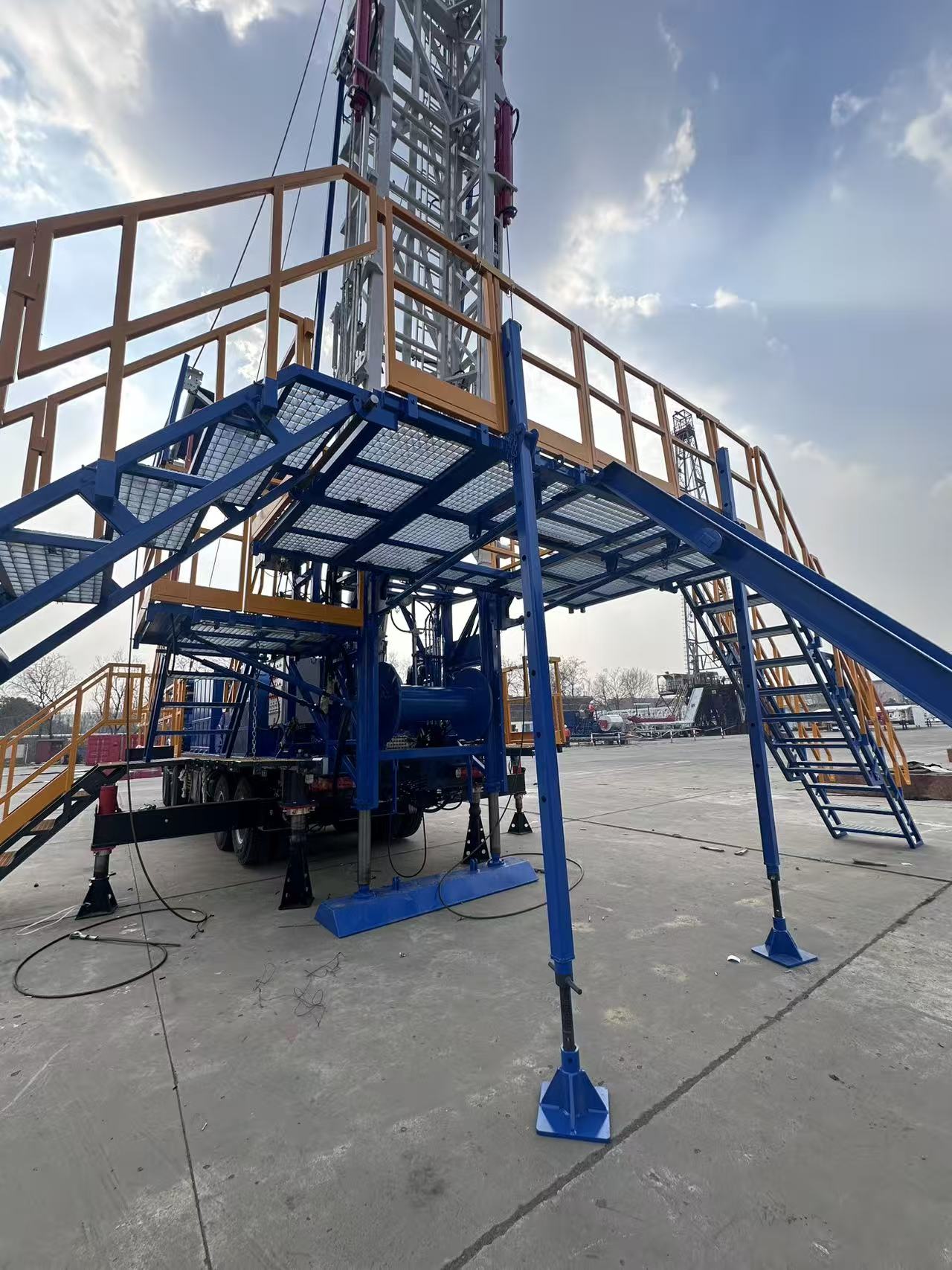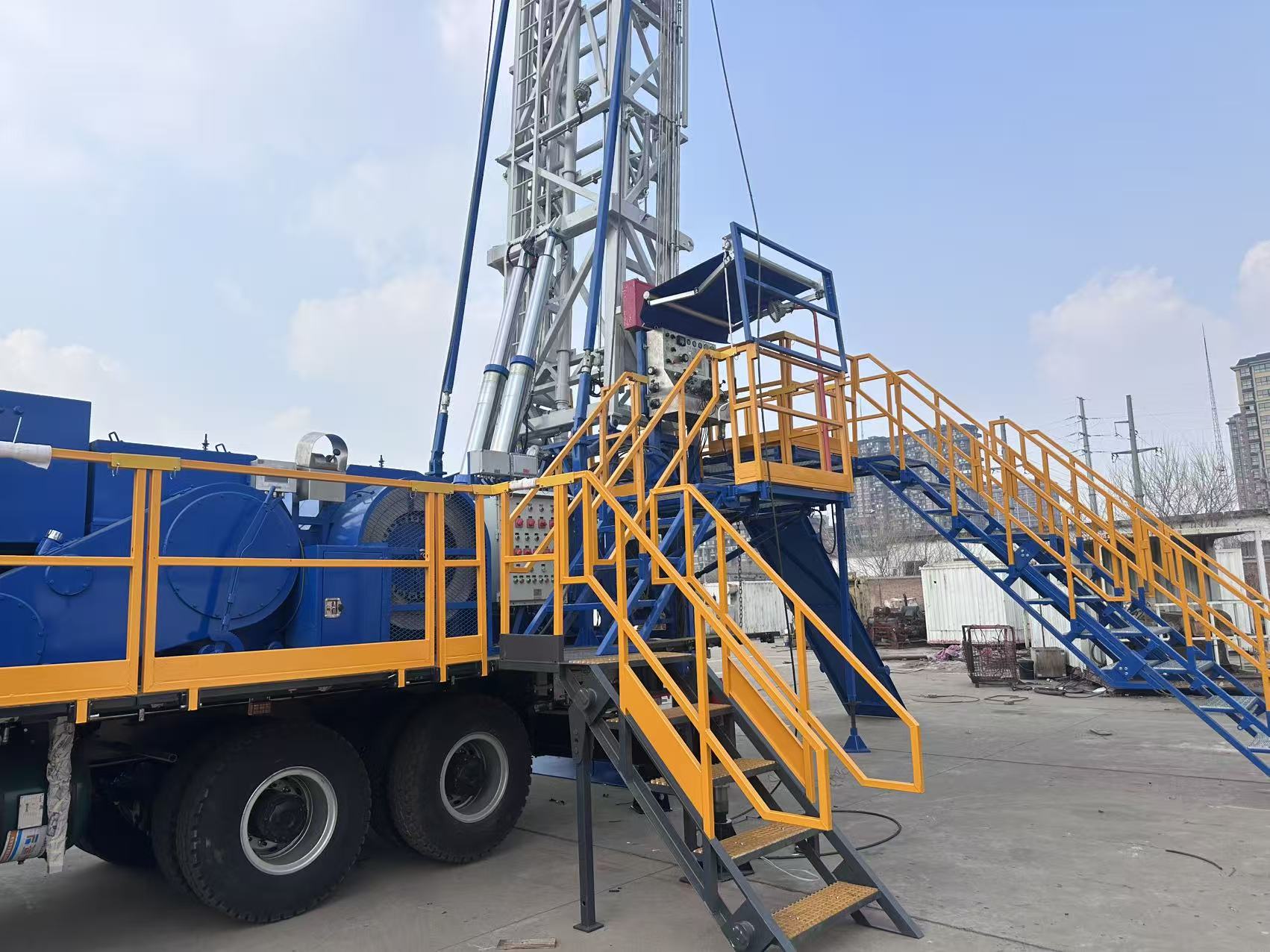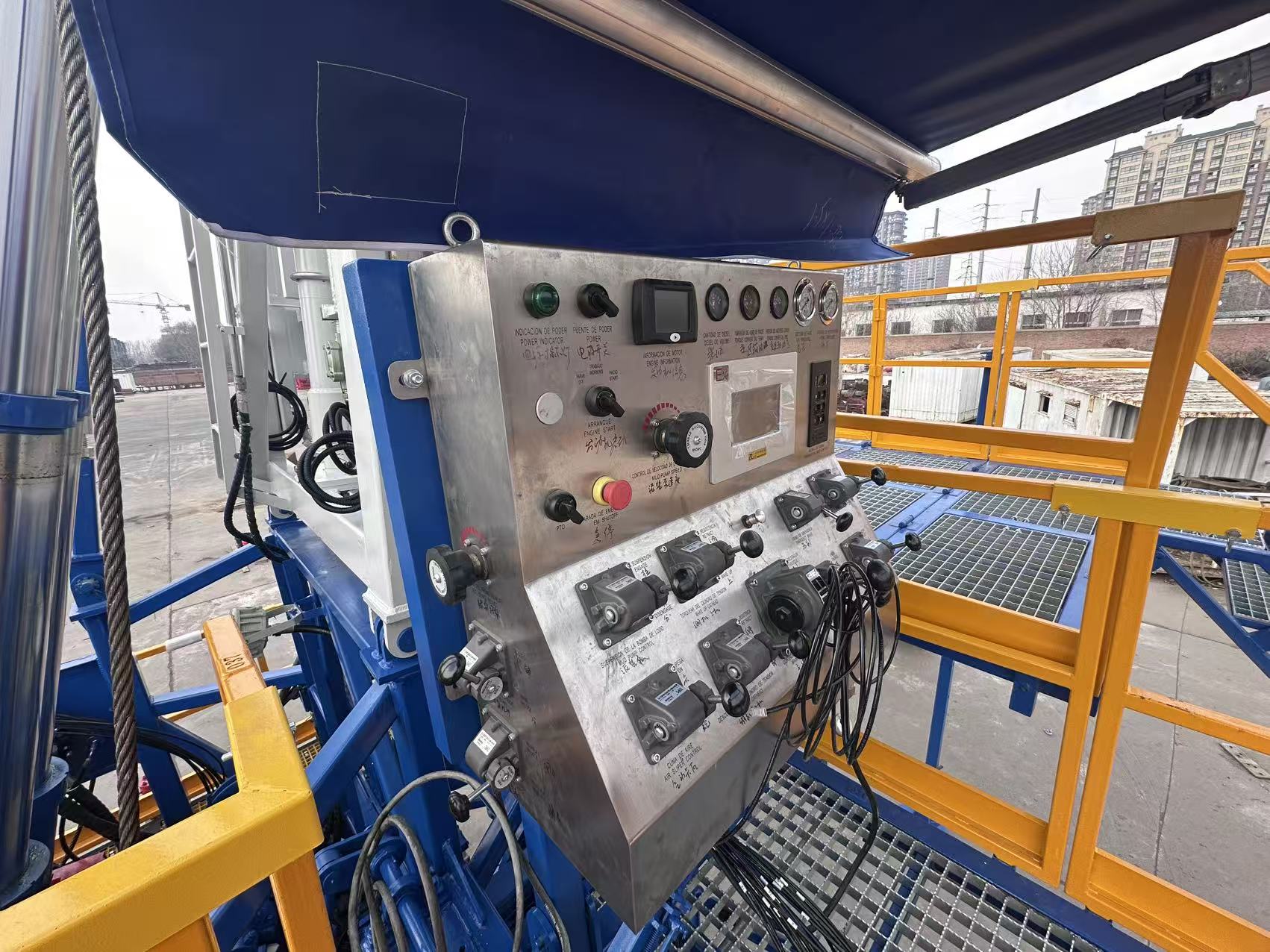Flush-By unit XJ350
Cat13+ALLIOSON4700 The price is open to negotiation The Flush-By Unit XJ350 is a truck-mounted, multi-functional workover rig designed for rapid deployment in oil and gas well maintenance operations. Classified as a Rapid Service Rig (RSR), it integrates drilling, flushing, and workover capabilities into a single compact unit, making it ideal for shallow to medium-depth wells (up to 3,200 meters with 2-7/8" EUE tubing) . Its primary role is to perform cost-effective interventions such as sand flushing, pump replacement, well killing, and pressure testing, while reducing operational downtime by 70% compared to conventional workover rigs.
$532850.00
- Brand: Sunjoy
- SKU: 15
- Shipping:
- Return Policy: <div class="return-policy"> <h2>No-Risk Return Policy</h2> <p>Not 100% satisfied? We make returns easy.</p> <div class="highlight-box"> <h3>🔄 30-Day Returns</h3> <p>Return any item in original condition within 30 days for a full refund.</p> </div> <h3>📦 How to Return:</h3> <ol> <li><strong>Contact us</strong> at returns@yourstore.com with your order number</li> <li><strong>Get approval</strong> + return shipping label (if applicable)</li> <li><strong>Ship back</strong> via prepaid method</li> </ol> <h3>❗ Important Notes:</h3> <ul> <li>Refunds exclude original shipping fees</li> <li>Customs duties on international returns are non-refundable</li> <li>Final sale items marked "Non-returnable" are excluded</li> </ul> <p>🔔 <em>Need help? Chat live with our support team → [右下角聊天图标]</em></p> </div>
Learn More
Flush-By Unit XJ350: High-Efficiency Workover Rig for Oilfield Operations
1. Definition & Core Functionality
The Flush-By Unit XJ350 is a truck-mounted, multi-functional workover rig designed for rapid deployment in oil and gas well maintenance operations. Classified as a Rapid Service Rig (RSR), it integrates drilling, flushing, and workover capabilities into a single compact unit, making it ideal for shallow to medium-depth wells (up to 3,200 meters with 2-7/8" EUE tubing) . Its primary role is to perform cost-effective interventions such as sand flushing, pump replacement, well killing, and pressure testing, while reducing operational downtime by 70% compared to conventional workover rigs .
Key Features:
- Quick Mobilization: Assembled by 3-4 operators in <30 minutes, significantly faster than traditional rigs (4+ hours) .
- Multi-Task Capability: Combines the functions of a crane, pump truck, and workover rig, eliminating the need for multiple equipment .
- High Traction: Equipped with an 8x4 chassis for off-road mobility, suitable for challenging terrains .
- Safety Integration: Hydraulic rod safety clamps provide up to 71,000 lbs of braking force for emergency situations .
2. Technical Specifications
| Parameter Category | Typical Specifications | Description |
|---|---|---|
| Rated Load | 400 kN (44.6 tons) | Maximum static load capacity for lifting operations . |
| Working Depth | 3,200 m (2-7/8" EUE) | Depth range for tubing interventions . |
| Engine Power | 340 HP | Diesel engine for high torque output in demanding conditions . |
| Pump Pressure | 3,000 psi | Static sealing pressure for flushing and pressure testing . |
| Mast Height | 24 m | Telescopic mast for vertical operations . |
| Weight | 44,610 kg | Compact design for transportability . |
3. Applications
The XJ350 excels in a wide range of well maintenance scenarios:
- Well Interventions:
- Sand Flushing: Removes sand deposits using high-pressure fluid to restore well productivity .
- Pump Replacement: Efficiently swaps downhole pumps (e.g., progressing cavity pumps) with minimal downtime .
- Cement Plugging: Installs temporary cement barriers for well abandonment or zonal isolation .
- Diagnostic & Repair:
- Rod Fishing: Retrieves broken sucker rods or tubing using integrated fishing tools .
- Pressure Testing: Verifies casing integrity and seals with up to 3,000 psi pressure .
- Routine Maintenance:
- Polished Rod Changes: Replaces worn-out polished rods on sucker rod pumps .
- Dewaxing: Clears paraffin buildup in tubing using heated fluids .
- Emergency Response:
- Well Killing: Controls uncontrolled well flows by injecting heavy fluids .
- Stuck Pipe Recovery: Uses hydraulic power to free stuck tubulars .
4. Model Naming & Manufacturer
- Model Code:
- XJ: Abbreviates "修井" (Xiū Jǐng), meaning "workover" in Chinese.
- 350: Typically refers to the engine power (350 HP) or maximum load capacity (350 tons) depending on the manufacturer .
- Leading Manufacturers:
- Shandong Beyond Petroleum Equipment (China): Specializes in API-compliant workover rigs .
- TAIKE Offshore Petroleum Equipment (Jilin, China): Offers XJ350 with ISO 9001 and API certifications .
5. Operational Advantages
- Cost Efficiency:
- Reduces labor costs by 60% compared to traditional rigs due to simplified operations .
- Eliminates rental fees for auxiliary equipment (e.g., crane, pump truck) .
- Safety Compliance:
- Meets international standards (API, ISO) for structural integrity and HSE protocols .
- Hydraulic controls minimize operator exposure to hazardous areas .
- Mobility:
- Truck-mounted design allows rapid deployment to remote or confined well sites .
- Compact size (16.8m × 3.1m × 4.4m) fits into narrow access points .
6. Technical Drawbacks & Mitigation
- Depth Limitation:
- While suitable for most shallow wells, deeper applications (e.g., >3,200m) require larger rigs. Mitigation: Pair with coiled tubing units for extended reach .
- Weather Sensitivity:
- Extreme temperatures may affect hydraulic performance. Mitigation: Equip with winterized components (e.g., heated cabins, anti-freeze fluids) .



- Extreme temperatures may affect hydraulic performance. Mitigation: Equip with winterized components (e.g., heated cabins, anti-freeze fluids) .